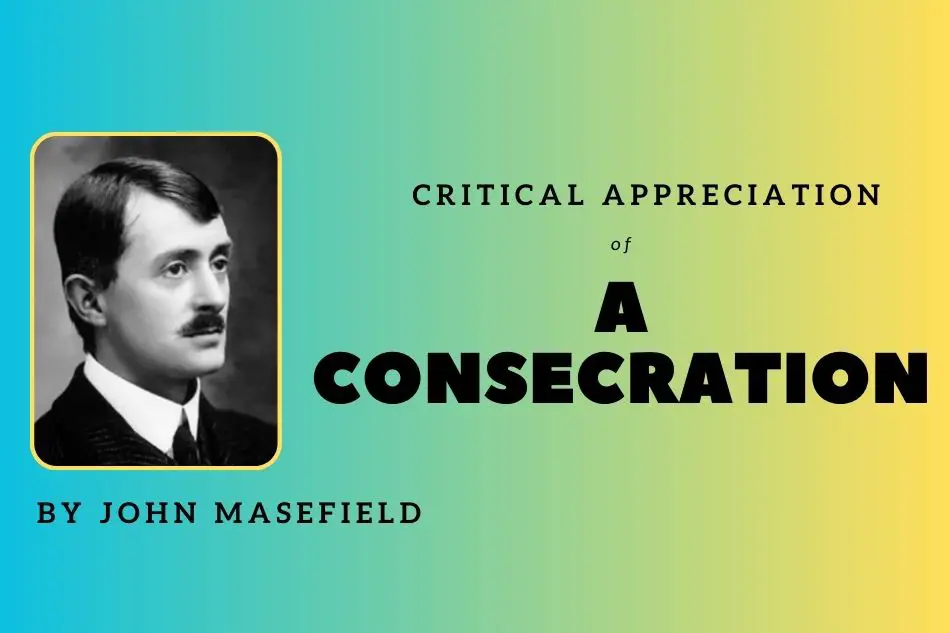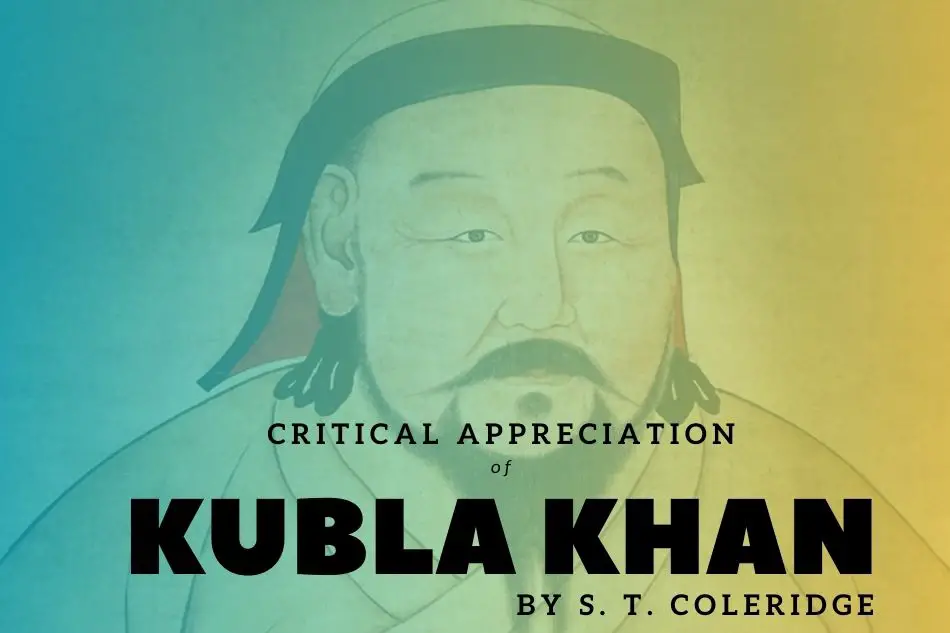“The Love Song of J. Alfred Prufrock” by T. S. Eliot is a modernist poem that delves into the inner turmoil and existential crisis of its protagonist.
The poem “The Love Song of J. Alfred Prufrock” explores themes of alienation, self-doubt, and the inability to communicate effectively, encapsulating the angst of the modern individual. T. S. Eliot’s use of fragmented imagery, stream-of-consciousness, and the juxtaposition of high and low culture creates a dissonant and fragmented narrative that mirrors Prufrock’s inner turmoil.
The poem, known for its intricate language and modernist techniques, has been widely praised for its exploration of the human condition and the inner workings of the modern mind. As an attempt to write a critical appreciation, in this article, we will delve into this poem’s themes, stylistic elements, and the profound impact it has had on modern literature and the understanding of human consciousness.
Across Eliot’s works, such as “The Waste Land” and “The Hollow Men,” we encounter similar explorations of fragmented human consciousness and societal disillusionment. This interconnected thematic exploration illuminates Eliot’s cohesive portrayal of the complexities of human existence.
Table of Contents
The Significance Of T. S. Eliot’s Poetry
Eliot’s Contribution To Modernist Poetry
T. S. Eliot is widely regarded as one of the most influential poets of the 20th century, renowned for his significant contribution to modernist poetry. His works revolutionized the literary landscape by challenging traditional poetic forms and delving into the complexities of the human experience. Eliot’s poetry provided a unique perspective on the fragmentation of modern life and the struggle to find meaning amidst chaos, reflecting the disillusionment of the post-World War I era.
Evolution Of Eliot’s Writing Style
Throughout his career, T. S. Eliot’s writing style underwent a remarkable evolution, from his early experimentation with traditional poetic forms to his groundbreaking embrace of free verse and stream-of-consciousness narrative techniques. His innovative use of imagery, symbolism, and allusions created a rich tapestry of meaning, inviting readers to explore the depths of the human psyche and society’s existential quandaries. Eliot’s ability to seamlessly blend elements of the classic and the avant-garde in his poetry cemented his legacy as a trailblazer in the literary world.
Understanding “The Love Song Of J. Alfred Prufrock”
The Love Song of J. Alfred Prufrock by T. S. Eliot is a masterpiece that delves into the intricacies of human nature, existential angst, and the passage of time. Understanding this iconic poem involves taking a deeper look into Prufrock’s character and psychology, as well as unraveling the profound symbolism and allegory woven into the verses.
Exploration Of Prufrock’s Character And Psychology
Prufrock, the protagonist of the poem, is depicted as a hesitant and introspective figure plagued by self-doubt and indecision. His inner turmoil and sense of inadequacy are evident as he navigates through the complexities of his own mind and societal expectations. The poem serves as an exploration of his psychological landscape, inviting the reader to ponder the complexities of human emotions and the struggle for self-identity.
Symbolism And Allegory In The Poem
T. S. Eliot intricately weaves symbolism and allegory into “The Love Song of J. Alfred Prufrock,” creating a multi-layered narrative that speaks to universal themes. The yellow fog, the evening spread out against the sky, and the mermaids singing each hold deeper meanings that add richness and depth to the poem. These symbols invite interpretations about the passage of time, disillusionment, and the human condition, elevating the poem to a timeless work of art.
Themes In “The Love Song Of J. Alfred Prufrock”
T. S. Eliot’s “The Love Song of J. Alfred Prufrock” delves into themes of existential crisis, alienation, and fear of aging. The poem captures the inner turmoil of the protagonist, where he grapples with society’s expectations and his own insecurities, making it a powerful exploration of modernist disillusionment.
Alienation And Urban Decay
T. S. Eliot’s “The Love Song of J. Alfred Prufrock” explores the theme of alienation and urban decay in the modern world. The poem captures the existential crisis of the protagonist, Prufrock, as he navigates through the fragmented and indifferent urban landscape. The imagery of yellow fog, drains, and dull, twisted streets paints a picture of a desolate cityscape, reflecting the pervasive feelings of isolation and disconnection experienced by the modern individual. Eliot’s portrayal of urban decay serves as a metaphor for the alienation and estrangement felt by Prufrock, highlighting the dehumanizing effects of modernity on the human psyche.
Fear Of Aging And Insecurity
Another prominent theme in “The Love Song of J. Alfred Prufrock” is the fear of aging and insecurity. Prufrock’s musings on his physical appearance, particularly his balding scalp and thin arms, reveal his deep-seated apprehension about growing old and losing his vitality. The poem delves into the psychological complexities of insecurity and self-doubt, as Prufrock grapples with his inability to muster the courage to express his feelings. Eliot adeptly captures the pervasive sense of existential angst and unease that arises from the looming specter of mortality, as Prufrock confronts the disquieting realization of his own mortality and the transience of life.
Literary Devices In The Poem
The Love Song of J. Alfred Prufrock by T. S. Eliot is a masterful poem that showcases a deep exploration of human emotions and psychological complexities. Through the skillful use of literary devices, Eliot creates a rich tapestry of imagery, symbolism, and allusions that captivate and challenge the reader. In this critical appreciation, we will delve into the diverse literary devices employed in the poem, providing insights into their significance and impact on the overall meaning and interpretation of the text.
Imagery And Juxtaposition
Eliot’s masterful use of imagery and juxtaposition creates a vivid and thought-provoking landscape within the poem. The juxtaposition of the mundane and the extraordinary, the modern and the ancient, allows for a dynamic interplay that heightens the reader’s sensory experience. The imagery of “yellow fog” and “yellow smoke” penetrates the senses, evoking a haunting and atmospheric backdrop that mirrors Prufrock’s internal turmoil.
Use Of Allusion And Symbolism
The poem is replete with a rich tapestry of allusions and symbolism that add layers of meaning and depth to the text. Eliot’s references to historical, mythological, and literary figures such as John the Baptist, Lazarus, and Hamlet serve as powerful allusions, imbuing the poem with a sense of timelessness and universality. The symbolic use of “mermaids” and “sea-girls” offers profound insights into Prufrock’s existential angst and inner conflict, elevating the poem beyond a mere narrative.
Interpretations And Critical Analysis
“The Love Song of J. Alfred Prufrock” has been a subject of extensive critical interpretation and analysis since its publication in 1915. It is a complex modernist poem that delves into the inner thoughts and emotions of the protagonist, J. Alfred Prufrock, as he grapples with existential questions and his own insecurities. The poem’s rich imagery, use of allusion, and fragmented narrative style have sparked various interpretations and critical responses, leading to ongoing scholarly debate.
Historical Context And Cultural Influences
It is important to consider the historical context and cultural influences that shaped T. S. Eliot’s writing of “The Love Song of J. Alfred Prufrock.” The poem emerged during a time of significant cultural and intellectual upheaval, with the advent of modernism and the impact of World War I. Eliot’s experiences in London and exposure to European literary movements, such as symbolism and impressionism, also influenced the themes and stylistic elements of the poem.
Critical Responses And Controversies Surrounding The Poem
The poem has elicited diverse critical responses and controversies. Some critics have praised Eliot’s skillful use of literary devices and his ability to capture the fragmented and disjointed nature of modern consciousness. However, others have scrutinized the poem for its perceived elitism, pessimism, and lack of cohesive narrative. Additionally, debates have arisen regarding the poem’s treatment of gender and its portrayal of Prufrock’s internal struggles.
T. S. Eliot’s Impact On Literature
T. S. Eliot’s “The Love Song of J. Alfred Prufrock” left a lasting impact on literature, showcasing his mastery of modernist poetry. The poem delves into the complexities of the modern individual’s psyche in a fragmented and elusive narrative style, solidifying Eliot’s influence on the literary canon.
Influence On Modern Poetry And Subsequent 20th-century Writers
T. S. Eliot’s impact on modern poetry and subsequent 20th-century writers is indisputable. His groundbreaking work, “The Love Song of J. Alfred Prufrock,” marked a significant shift in poetic expression. Eliot’s innovative use of imagery, symbolism, and fragmented narration laid the foundation for modernist poetry. His exploration of urban alienation and the fragmented self resonated with poets such as Ezra Pound, W.H. Auden, and Sylvia Plath, inspiring them to push the boundaries of conventional poetic form and content. Eliot’s influence can be seen in the surrealist elements of Salvador Dali’s poetry and the absurdist tone of Samuel Beckett‘s works, cementing his legacy as a transformative force in modern poetry.
Legacy And Relevance In Contemporary Literature
T. S. Eliot’s legacy continues to have a profound impact on contemporary literature. His experimentation with form and language, as evidenced in “The Love Song of J. Alfred Prufrock,” opened new avenues for literary expression. Eliot’s themes of existential angst, the search for meaning, and the fragmentation of identity remain relevant in the works of contemporary poets and writers. His influence can be seen in the surrealistic prose of Haruki Murakami, the introspective poetry of Carol Ann Duffy, and the postmodern narratives of David Foster Wallace. Eliot’s ability to capture the complexities of the modern experience ensures his continued relevance in the ever-evolving landscape of contemporary literature.
Frequently Asked Questions For Critical Appreciation Of “The Love Song Of J. Alfred Prufrock” By T. S. Eliot
What Is The Overall Message Of The Love Song Of J. Alfred Prufrock?
The Love Song of J. Alfred Prufrock portrays the inner turmoil and insecurity of its protagonist as he struggles with emotions and perceptions. The poem reflects a sense of paralysis and alienation in modern society, exploring themes of love, identity, and the human condition.
What Is The Conclusion Of The Love Song Of J. Alfred Prufrock?
The Love Song of J. Alfred Prufrock concludes with the protagonist feeling lonely and disconnected, craving connection but unable to form meaningful relationships. Through imagery and introspection, Prufrock expresses a sense of alienation and despair, highlighting the human condition of longing for connection amid a world of isolation.
What Is The Main Issue For The Speaker Of The Love Song Of J. Alfred Prufrock?
The main issue for the speaker of The Love Song of J. Alfred Prufrock is his internal conflict and self-doubt. He grapples with insecurity, fear of rejection, and a sense of insignificance, which affects his ability to communicate and connect with others.
What Is The Theme Of The Love Song Of J. Alfred Prufrock By Ts Eliot?
The theme of “The Love Song of J. Alfred Prufrock” by T. S. Eliot is the existential crisis and feelings of alienation experienced by the protagonist. The poem explores the fears and insecurities of modern life, and the struggle to find meaning and connection in a fragmented world.
What Is The Central Theme Of “The Love Song Of J. Alfred Prufrock”?
The central theme revolves around fear, self-doubt, and the human condition.
Conclusion
“The Love Song of J. Alfred Prufrock” by T. S. Eliot remains a timeless exploration of the modern individual’s inner turmoil and existential angst. Through vivid imagery and introspective musings, Eliot offers a thought-provoking insight into the complexities of human experience.
This poem continues to captivate and resonate with readers, affirming its enduring literary significance.






